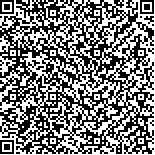徐武平,熊莉君.重复经颅磁刺激联合心理干预治疗脑卒中后抑郁患者的疗效观察[J].中华物理医学与康复杂志,2022,44(4):348-352
扫码阅读全文

|
| 重复经颅磁刺激联合心理干预治疗脑卒中后抑郁患者的疗效观察 |
|
| |
| DOI:10.3760/cma.j.issn.0254-1424.2022.04.014 |
| 中文关键词: 重复经颅磁刺激 心理干预 脑卒中后抑郁 神经功能 认知功能 生活质量 |
| 英文关键词: Repetitive transcranial magnetic stimulation Psychological interventions Post-stroke depression Neurological functioning Cognition Quality of life |
| 基金项目: |
|
| 摘要点击次数: 4520 |
| 全文下载次数: 5347 |
| 中文摘要: |
| 目的 观察重复经颅磁刺激(rTMS)联合心理干预对脑卒中后抑郁(PSD)患者抑郁状态、神经功能及生活质量的影响。 方法 采用随机数字表法将228例PSD患者分为心理组、rTMS组及观察组,每组76例患者。所有患者均常规给予脑卒中治疗及抗抑郁药物口服,心理组患者在此基础上辅以心理干预,rTMS组患者则辅以高频(10 Hz)rTMS治疗(磁刺激部位为左侧背外侧皮质区),观察组患者则辅以心理干预及高频rTMS治疗,3组患者疗程均为8周。于治疗前、治疗8周后分别采用24项汉密尔顿抑郁量表(HAMD-24)、美国国立卫生研究院卒中量表(NIHSS)、简易精神状态量表(MMSE)及脑卒中专用生活质量量表(SS-QOL)对3组患者抑郁情绪、神经功能受损程度、认知功能及生活质量进行评定。 结果 治疗8周后3组患者HAMD评分、NIHSS评分、MMSE评分及SS-QOL评分均较治疗前明显改善(均P<0.05);并且治疗后观察组患者HAMD评分[(14.81±2.57)分]、NIHSS评分[(7.49±2.14)分]、MMSE评分[(27.15±3.54)分]和SS-QOL评分[(159.24±15.74)分]亦显著优于心理组及rTMS组水平,组间差异均具有统计学意义(均P<0.05)。治疗结束时观察组患者临床缓解率(38.16%)、反应率(85.53%)均较心理组及rTMS组显著升高(P<0.05)。 结论 心理干预联合rTMS治疗PSD患者具有协同作用,能进一步缓解患者抑郁病情,提高患者神经功能、认知功能及生活质量,该联合疗法值得临床推广、应用。 |
| 英文摘要: |
| Objective To investigate any effect of supplementing psychological intervention with repeated transcranial magnetic stimulation (rTMS) in treating depression, improving neurological functioning and improving the life quality of depressed stroke survivors. Methods A total of 228 patients with post-stroke depression (PSD) were randomly divided into a psychological intervention group, an rTMS treatment group and a combined treatment group, each of 76. In addition to routine stroke treatment and anti-depressant drug treatment, the psychological intervention group received psychological counseling and the rTMS group was given rTMS at 10Hz for 8 weeks. The combined group received both. Before and after the intervention, depression was quantified using the 24-item Hamilton Depression Scale. The National Institutes of Health Stroke Scale was used to quantify neurological functioning. And cognitive functioning was assessed with the Cognitive Function Assessment Scale. Life quality was assessed using the Stroke-specific Quality of Life Scale. Results After the 8 weeks, significant improvement was observed in the average scores of all three groups on all of the measurements. The combined group had improved significantly more than the other two groups in terms of all of the dimensions studied. The combined group′s clinical remission rate (38.16%) and response rate (85.53%) were significantly higher than those of the other two groups. Conclusions Repetitive transcranial stimulation can significantly improve the effectiveness of psychological counseling in treating PSD after a stroke. Using them jointly is worthy of application in the clinical practice. |
|
查看全文
查看/发表评论 下载PDF阅读器 |
| 关闭 |